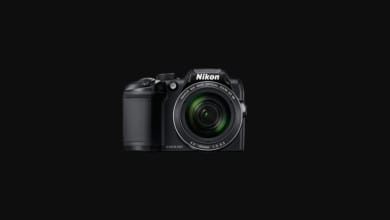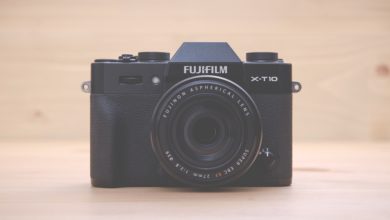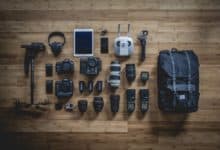Mirrorless Vs DSLR Cameras
 If you are in the chase for a new camera, chances are you would come to terms with two plausible choices- A DSLR and a mirrorless camera.
If you are in the chase for a new camera, chances are you would come to terms with two plausible choices- A DSLR and a mirrorless camera.
Yet, from there, your judgment is prone to be clouded and torn between these alternatives. However, our expert guide weighs down the pros and cons of these cameras hoping to assist you in making an informed decision.
Before understanding the differences between the two, it is pertinent to glance through their similarities. Quality and versatility are the two distinguishing features of these cameras.
Both DSLRs and mirrorless cameras offer great choices to choose from according to one’s needs and interests. They are cameras that house interchangeable lenses due to which one can use them to suit all their needs.
DSLR and Mirrorless: A foreword to its working
Digital Single Lens Reflex camera, universally known by its acronym DSLR, is a camera that works on the precept of light reflection. The light is emulated by a mirror within the camera body which goes through a lens leading up to a prism.
One can preview the shot when the light leads up to the viewfinder. The light consequently hits the image sensor upon pressing the shutter button and the final image is thus captured.
A mirrorless camera, quite agreeable to its name, does not have a mirror. It follows a simple optical path with the light led directly into the image sensor through the lens. The preview of the image is put on view in the rear screen of the camera.
Understanding the pros and cons
In comparison to mirrorless cameras, DSLR designs suffer some intrinsic confines especially in terms of its construction and design. But that is not all, read along to understand which camera is best for you.
Built and Size
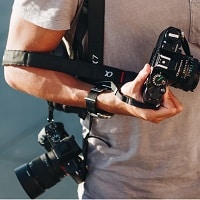 DSLR cameras are bulkier and largely-built in comparison to mirrorless cameras. It has an overhanging top with its reflex system requiring space to slot in both the mirror and prism.
DSLR cameras are bulkier and largely-built in comparison to mirrorless cameras. It has an overhanging top with its reflex system requiring space to slot in both the mirror and prism.
This would mean that the viewfinder is positioned identically on every DSLRs, principally in-line with ocular axis and digital sensors. As a result, many DSLRs face disapproval for having an unchanged exterior body. For instance, the Nikon D3500, in spite of being smaller than its predecessors still is bulkier than most other mirrorless camera bodies.
A mirrorless camera, on the other hand, is smaller in size while being compact and less bulky than DSLRs. With the mirror and pentaprism detached, the camera can be designed to be a lot lighter. The physical size is reduced noticeably with its components giving nothing away to the feel of a heavy camera. As a result, these mirrorless cameras are deemed to be handier.
It wouldn’t come as a surprise if expediency of these cameras overpowered the ace qualities of DSLRs. With the overture of smartphones, camera features have been long integrated into them. Many people now choose to leave behind their older cameras for compact ones. So certainly, mirrorless cameras are frontward in their approach. They create smaller, lighter and compact cameras that people gravitate towards.
Heaviness
A DSLR is outsized in its built and its bulkiness translates to the added mass. Whilst most elemental DSLRs comes with a plastic body and added in-house mechanisms to render them lighter, it is impeded by minimum height and depth concerns to house the pentamirror and viewfinder. This is suggestive of ample wasted space that needs to be roofed. For example, The Pentax K-3 lineup weighs around 800g much before the lens is mounted. Adding to the list of hefty DSLRs are Nikon D7100 and the Canon 70D which weighs around 765 g and 755 g in that order.
In contrast, a mirrorless camera is devoid of a hefty body which subsequently leads them to be light-weighted. There is no added mass of a mirror or a viewfinder. It is easier to carry around from place to place and can be used effortlessly from time to time. There is a total lack of concern about wasted spaces that need to be covered, unlike the DSLR cameras.
Mirror and Shutter design
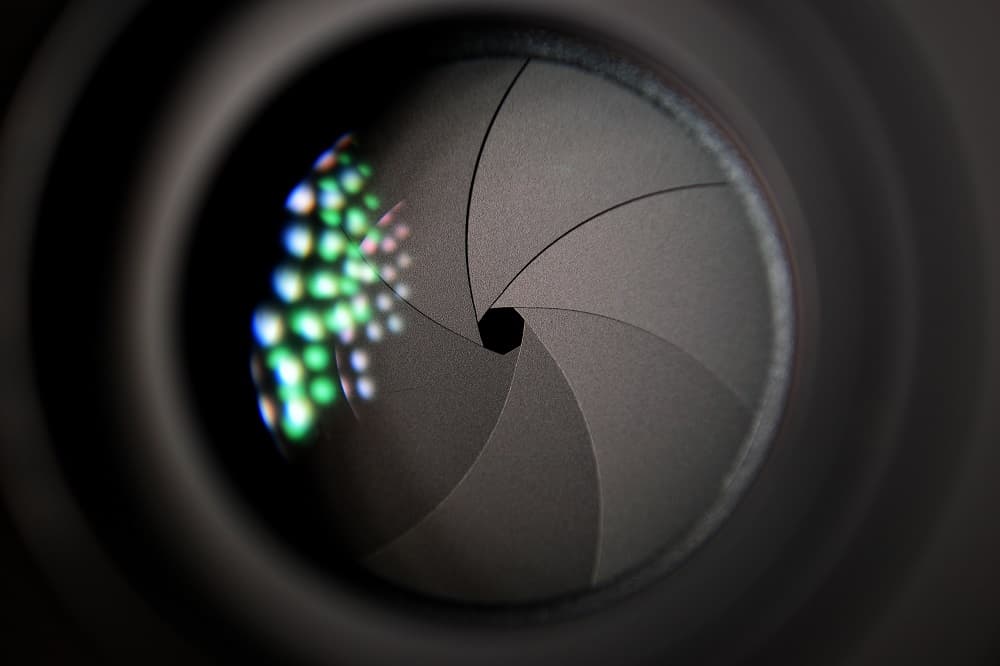
In the case of a DSLR, every excitant demands its mirror to flutter up and down to allow for the passage of light onto the image sensor. This generates a number of strategic disadvantages and is listed below;
- Mirror blip: The technologies integrated into the system ensure that the camera shoots at incredibly hasty shutter speeds. This results in increased capturing of burst images. Nevertheless, the mirror slap comes with a string of setbacks including augmented noises at shutter click. In spite of continued efforts from the makers to lessen this noise by slowing the mirror movements, nothing has been above par. The swift mirror strikes put the cameras at greater risk of camera shakes.
- Frame pace restraints: While mirror mechanisms and shutter workings are remarkable, the substantial speed at which the mirror flicks up and down is partially limited. Only a perfect synchronization of mirror and shutter sounds will ascertain the ideal pace restraints.
- Expensive technical support: Owing to its complex mirror arrangements, a DSLR is pricey to assemble and provide technical support. Disassembling the camera and substituting in-house components can take very long for the technical team.
Alternatively, a mirrorless camera does not flicker about in an upward-downward motion. This creates added benefits like,
- Absence of mirror slaps: With the lack of a mirror, these cameras are marked by less clamor. There are no blaring noises produced in the process of capturing images. The only other sound which is audible is the slight tremor brought about by the camera shutter.
- The decreased camera shakes The characteristically reduced vibrations equal to lesser chances of camera shakes. Yet, one can do away with this chance by enabling the electronic front curtain shutter.
- Easier to clean up: Upon dismounting the camera lens, the sensor would present itself exposed. One does not require a completely charged battery to bolt up the mirror while cleaning. Cameras that come with in-built image stabilization would just require choosing the option from the analogous camera menu to have its stabilization mechanism protected. Further dust is prevented by mirrorless cameras’ make-up that does not have an opening through which dust particles can enter easily into the camera chamber.
- Fast capture rate: The dearth of a mirror equals to the capture rate to be unbound by the mirror speed. The images can be potentially captured with faster frame rates, reduced noise, and collapsed viewfinder.
- Inexpensive technical support: The presence of a very few moving parts evidently reduces the manufacturing costs and maintenance expenses.
Preview through Viewfinder
We cannot see the final image through the optical viewfinder in a DSLR. One has to look through LCD or camera meter to see the images and adjust the exposure accordingly.
On the contrary, a live representation of your final image is feasible with the help of a mirrorless camera. To put it simply, you see what you are going to get. Any discrepancies in the picture will be seen and can be altered much before the course of clicking the picture.
Price
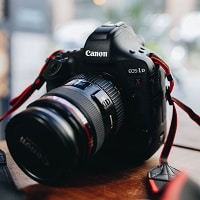 The complexity in constructing and assembling the mirror arrangements in a DSLR causes the manufacturing costs to be on the steeper side of the scale. The abundance of moving components in the camera calls forth a towering exactness in the assembly system.
The complexity in constructing and assembling the mirror arrangements in a DSLR causes the manufacturing costs to be on the steeper side of the scale. The abundance of moving components in the camera calls forth a towering exactness in the assembly system.
Furthermore, there is a need for lubrication in areas where metal surfaces rub against each other. All these, subsequently adds to the outlay.
Although over the years, the makers have gotten efficient over manufacturing, assembling and mirror mechanisms, the price still remains comparatively higher. In addition, even the slightest slip-ups would cost them even more as they have to potentially repair and replace it with the aid of exhaustive labor.
Diversely, producing a mirrorless camera is not an easy task. It takes plentitude of research and development and cannot be done without a far-reaching technical team who persistently is in search of innovative and enhanced methods to incorporate the required features, camera performances and autofocus technologies into the camera make-up. Owing to this reason although the manufacturing costs are lower than DSLRs, the makers of mirrorless cameras impose higher prices for their camera system.
Need for a Secondary mirror
DSLR cameras that come with phase recognition autofocus structure require a secondary mirror which sets itself at a different angle from the primary mirror of the camera. The former mirror passes the arriving light to phase-detection sensors that are placed on the underside of the chamber.
The secondary mirror if not sited to perfection will affect the accuracy of phase detection. Any slight deviation would cause a missed deviation. If the mirror alters its position of parallelism from the phase detection, some autofocus might precisely present itself while others continually neglect focus. Furthermore, the lenses must be properly calibrated with the camera for apposite autofocus.
On the stark contrast, a mirrorless camera faces no phase recognition or mirror alignment problems. They are built with multipart autofocus which leaves us with no worries about the placement of a secondary mirror or arrangement of the phasing system.
Viewfinder
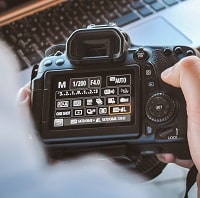 A DSLR makes use of an optical viewfinder. Limitedly, in these cameras, the information overlay is restricted to the basic exposé of grid lines. Although there is some fixed information accessible on the grid, it cannot be altered or customized accordingly.
A DSLR makes use of an optical viewfinder. Limitedly, in these cameras, the information overlay is restricted to the basic exposé of grid lines. Although there is some fixed information accessible on the grid, it cannot be altered or customized accordingly.
There is a lack of image review and focus peaking (wherein the areas in focus are revealed). Although it has an excellent viewfinder exposure, it fails to offer complete coverage-what one sees in an optical viewfinder, would be five percent smaller than the image the camera would capture.
Furthermore, the lighting conditions are greatly influenced by the viewfinder. If the lighting is meager, one cannot simply see clearly. As a result, poorer images would be captured by a DSLR. Focusing images in such lighting conditions is hard as one cannot prefigure if the image captured has really turned out well.
Additionally, one can zoom-in completely using the Live View Mode on some DSLR cameras. The subject can be zoomed in closely all the while pegging creditable focus. However, this is not inbuilt into the viewfinder of most of the DSLRs. Without this attribute, zooming in entirely would not be possible.
These cameras also suffer a limited numeral of focus points. Even those spots would be primarily distributed in the center. Although the working is not compromised, if a need arises to move the focus to lateral extremities, the only viable option would be to shift the focus. Undoubtedly, this is not to be considered as the most sought-after choice. Besides, as one refocuses, the chances for the focal point to not linker with AF acquisitions are increased significantly.
It is indeed disquieting that the manufacturers of DSLRs still struggle with subject tracking. To finish with, one has to be really cautious while looking through the DSLR viewpoint while photographing intense light sources. This can be potentially dangerous to your eyes, chiefly while using long focal length lenses.
 Antithetically, mirrorless cameras put to use an electronic viewfinder. On a positive note, these EVFs ensure all the relevant information is shown right within the viewfinder. Several caution messages are displayed when called for. This might range from concerns over exposure data to warnings issued prior to possible blurry shots. A live preview of images ahead of their capture is made possible with mirrorless cameras. The captured images can be reviewed using the viewfinder.
Antithetically, mirrorless cameras put to use an electronic viewfinder. On a positive note, these EVFs ensure all the relevant information is shown right within the viewfinder. Several caution messages are displayed when called for. This might range from concerns over exposure data to warnings issued prior to possible blurry shots. A live preview of images ahead of their capture is made possible with mirrorless cameras. The captured images can be reviewed using the viewfinder.
Using an electronic viewfinder, one can shade their required area of focus with an overlay of color that they can choose from. In addition, mirrorless cameras ensure complete credibility in offering full viewfinder coverage.
That would be the rightful end to all your worries given that, what you see in the viewfinder gets translated unerringly into the final image. Even under dimly-lit conditions, the mirrorless camera works just satisfactorily.
Moreover, while using these cameras, one can zoom completely without even making use of added menu options. This function is inbuilt into the viewfinder of these cameras. In this way, one can whiz into a complete zoom much before a picture is captured.
Subject tracking is another feature that was made possible due to the EVF technology. Face and eye-tracking as a means for data analysis are already being efficiently incorporated into the mirrorless cameras. With the help of phase-detection sensors structured directly on the image sensors, the limitation of focal points scattered chiefly in the center is removed. The focus points are evenly distributed using contrast detection. On-sensor phase recognition branches out and reaches even the latently extreme points or borders. Lastly, owing to the capturing of the images through sensors, the threat of eye-damage while photographing extreme light-sensitive objects or acutely bright sources is eliminated.
Autofocus
 A DSLR camera makes use of phase-detection for autofocus. This technology ensures that the fast estimate of two converging beams of light.
A DSLR camera makes use of phase-detection for autofocus. This technology ensures that the fast estimate of two converging beams of light.
On the other hand, contrast detection seems to be the technology used in many mirrorless cameras for autofocus. It involves the detection of the highest contrast by the image sensors. This coincides with the focus and the focal point gets established. This, however, tends to be slower in comparison and works poorly in low lighting.
With newer advancements, mirrorless cameras have started to incorporate both phase and contrast detection into its system. This in-built feature on the image sensors is now used extensively to redefine the autofocus.
Image and Video Quality
Both cameras are known to produce images that are great in resolution and noises. DSLRs have established themselves as quality providers who deliver impeccable image quality. When we study the video quality offered by these cameras, we find that it is rather disappointing in their performance. It is not possible to use phase detection with the mirror up at the time of recording. This renders them slower and less precise. The camera struggles to find the focus in the midst of videos and poses a disadvantage.
Although the smaller image sensors of the mirrorless cameras meant lower quality images, it is no longer so. The makers have developed new ways to create sensitive chips that capture images that are faultless. In terms of video quality, mirrorless cameras are the best suited. It can capture high definition videos with 4X better resolution than HD footage.
Battery Life
 The battery life is higher for the DSLR cameras. The longevity is owing to its ability to shoot without an LCD screen. This is heightened as these cameras lack the electronic viewfinder which consumes a lot of battery.
The battery life is higher for the DSLR cameras. The longevity is owing to its ability to shoot without an LCD screen. This is heightened as these cameras lack the electronic viewfinder which consumes a lot of battery.
When we compare a mirrorless camera, it has an LCD screen and makes use of an electronic viewfinder for autofocus detection. Because of this, they tend to have shorter battery terms.
It must be noted that both DSLR and mirrorless cameras come with batteries that can be removed. Thus the hitch of battery life can be easily resolved by carrying a spare battery if need be.
Durability
Strength and durability are features that ought to be taken into consideration while striking a comparison. On the close evaluation of the same, we find that both the cameras perform satisfactorily in this regard. They come with constant improvisations that add to ensure the permanence of the camera. Alloy bodies are fast incorporated into the camera setup. The camera body comes with weather protection which offers considerable resistance against harsh weather conditions. Decisively, both mirrorless and DSLR cameras come hardened against adverse elements.
Accessories
One has wide options in his choice of lenses when we consider DSLR cameras. It provides lenses that suit all your needs. In addition, the lenses are catered in all ranges starting from reasonably priced to really expensive.
When we consider mirrorless cameras, there are not many options to choose from. The choices are restricted although, in recent years, the options are evolving and growing. According to some expert opinions, mirrorless lenses are better optimized with their camera-makeup.
Conclusion
From the above comparisons, it is evident that DSLRs fail to outperform mirrorless cameras. It is not hearsay that these cameras were structured to suit films. When it had to be digitalized, very limited changed were incorporated into the set-up. The motorized body along with many other components including pentaprism (the viewfinder), phase detection system, etc remained pretty intact. There is very little being to add in better features and incorporating new ones.
On the other hand, the mirrorless cameras are fast evolving to suit the growing needs of the time. Increased innovations are done in bettering the camera even further. It is not yet the ideal camera yet-it still has its setbacks including its battery life, wider lens choices, improved viewfinder among several others. Positively, the gaps are closing sooner than we anticipate.
The Future
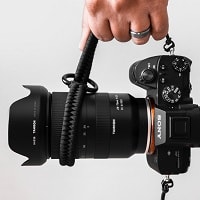 While it would have been practically unimaginable for DSLRs to lose ground to mirrorless cameras, the moment sure seems to be approaching at an unprecedented pace. The future is certainly bright for the mirrorless cameras. With its compact and light-weight design, more and more manufacturers are likely to enter the market to garner lead. The existing makers are certain to invest progressively in developing technologies to rectify the existing drawbacks.
While it would have been practically unimaginable for DSLRs to lose ground to mirrorless cameras, the moment sure seems to be approaching at an unprecedented pace. The future is certainly bright for the mirrorless cameras. With its compact and light-weight design, more and more manufacturers are likely to enter the market to garner lead. The existing makers are certain to invest progressively in developing technologies to rectify the existing drawbacks.
They are sure to advance their best features even further to remain firm-footed in the market. It is quite clear that these cameras have so much innovation to deliver.
While a complete wiping off of DSLRs is improbable, there is no denying that it would be positively endangered. The manufacturers are more likely to move to the fore in by investing in mirrorless technologies rather than expend in improving the existing DSLR features.
However, not everything is bleak while we consider the prospect of DSLR cameras. There is still hope left for the sworn lovers of the later- improved image and video resolutions, enhanced autofocus modules and integration of certain preferred built-in features are bound to make its way to the camera system.


